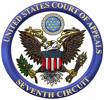When a person is caught in a lie, we normally assume that he is covering something up. But, if a defendant in a criminal case lies on the witness stand, is it fair to assume that he actually did what he was accused of doing? Such was the question in United States v. Edwards (No. 08-1124).
Edwards was arrested after making arrangments to sell crack to a government informant. The intended sale did not actually take place, but that is no barrier to conviction for drug trafficking. And, once convicted, a drug dealer becomes responsible under the federal sentencing guidelines for the entire quantity of drugs he has ever sold that counts as “relevant conduct.” (For an earlier post on the pitfalls of relevant conduct, see here.) In order to establish the amount that Edwards sold, the sentencing judge relied on, among other things, $765 in cash that Edwards was carrying at the time of his arrest. Edwards tried to explain away the cash with an unsubstantiated and seemingly implausible story about selling his minivan, but the judge was not convinced. If the minivan story was fabricated, then Edwards must have earned the money from selling crack, right? The sentencing judge concluded as much, and increased Edwards’ drug quantity accordingly.
On appeal, however, the Seventh Circuit held that the judge moved to this conclusion too quickly. Judge Posner, writing for the panel, sensibly observed,
The falsity of the defendant’s testimony makes reasonably clear that the $765 was proceeds of an illegal transaction of some sort, but does not show that it was proceeds from selling crack. For all one knows, the defendant sold other illegal drugs (he had been convicted in the past of possession of marijuana) or other contraband, such as guns, but did not want to acknowledge other illegal behavior, which he might have thought would get him into even worse trouble than he was in.
In light of these possibilities, it appeared that too much crack might have been attributed to Edwards when his guidelines sentence was calculated. The Seventh Circuit thus vacated Edwards’ sentence and remanded for resentencing.
It is true that Edwards’ false testimony does not logically require an inference that the $765 came from crack sales, but it is still surprising to see the Seventh Circuit not permit the inference. After all, what was at issue was a district court’s finding of fact, to which appellate courts are supposed to show some deference. Indeed, the First Circuit upheld a district court’s decision on similar facts in United States v. Jackson, 3 F.3d 506 (1st Cir. 1993). However, the Seventh Circuit felt that Jackson was inconsistent with other cases that reject “the automatic inference from disbelief in one part of a witness’s testimony to disbelief in the rest.”
Although the Seventh Circuit may not have shown its typical deference to district-court fact-finding in Edwards, the lower court’s piling on of relevant conduct is a reminder of why the drug sentencing guidelines have provoked so much criticism. Quantity tends to overwhelm other considerations in drug sentencing, and the determination of quantity under the guidelines makes no distinction between what was proven to a jury beyond a reasonable doubt and what was proven to a judge by a preponderance of the evidence. The diminished burden of proof under the guidelines invites dramatic increases in punishment on the basis of the sort of flimsy inferences used in Edwards. This is especially troubling when the defendant is being sentenced under the crack guideline, which is widely recognized to be unjustifiably harsh.

